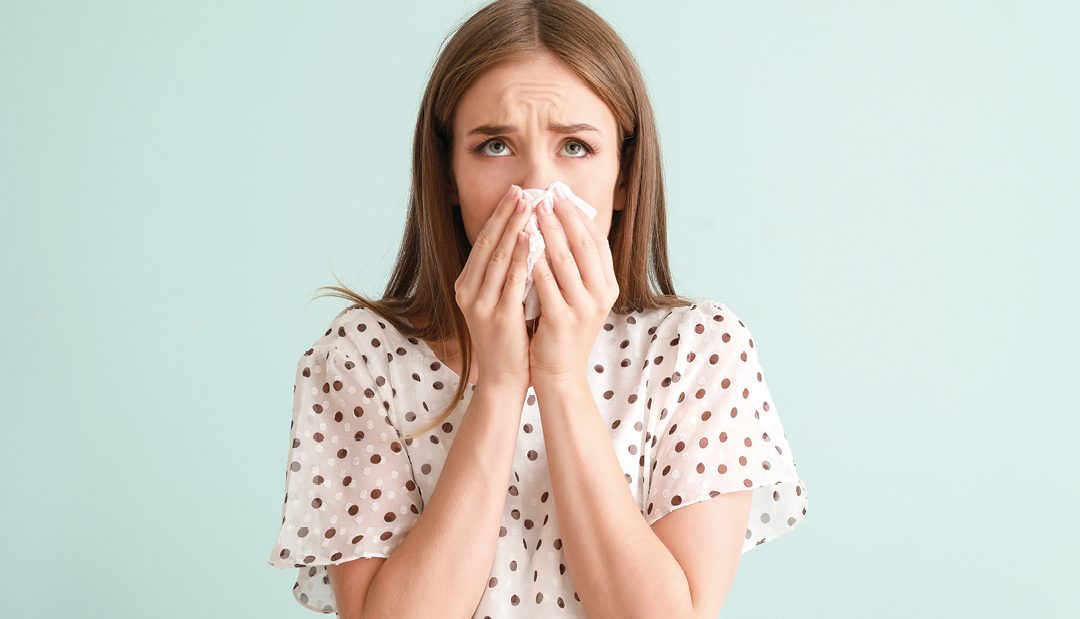Spring is a time of rejuvenation. The snow recedes and flowers arise. Birdsong fills the air and so do allergens. We want to enjoy this wonderful season for all its worth, but that can be difficult in between sniffles and the occasional cough. Thankfully, there are ways to protect your home from allergens, and there’s a good chance you’ll find these tips helpful even if spring doesn’t bother you.
The main thing to keep in mind when making your home allergen free is the indoor air quality. If it is poor, the air inside your home could end up pestering you just as badly as the air outdoors – if not worse. Though it’s often overlooked, one of the most practical steps toward improving indoor air quality is changing the filter on your heating, ventilation, and air conditioning (HVAC) system.
Air filters protect your home HVAC system against everything from dust to dirt and pollen, and also prevent these small particles from recirculating around your house. Eventually, however, the filter will become clogged. This means you need to replace it regularly for the best indoor air quality. As a rule, pleated air filters should be changed every ninety days and fiberglass filters every thirty days. When in doubt, you can always check with the instructions from the manufacturer. Keep in mind that if you own pets, or have very sensitive allergies, you may want to shorten the interval between changes.
Besides the filter on your HVAC system, you could also make use of a portable air filter. Impressively effective, high-efficiency particulate air (HEPA) filters are able to capture 99.9% of all air pollutants 0.3 microns in diameter or larger. Some, like those that utilize charcoal or activated carbon, will also help reduce common home odors. Others equipped with ultraviolet light technology can even kill many bacteria and germs.
Of course, air filters are only effective if the pollutants you are concerned about remain airborne. Some larger, heavier allergens, like mold and pollen, fall too quickly for an air filter to pick them up. The best defense here is to keep your floors clean, especially the carpets and throw rugs which are apt to collect allergens. This entails some deep cleaning in addition to your typical vacuuming. Whether you do it yourself or have it done professionally, carpets and rugs should be cleaned every six months to two years, depending on the traffic they receive. Again, factors such as pets and allergen sensitivity should be considered.
One way that you can promote carpet cleanliness and indoor air quality is to brush your pets regularly. Not only will they love it, but you’ll be able to mitigate the level of fur they shed onto the floor and into the air.
The green-thumbs among us might even keep plants for ‘pets.’ Still, even those could affect indoor air quality. If you react to pollen, you probably already know to avoid pollinating house plants, but did you know growing their non-pollinating counterparts could soothe your allergies? These natural air filters can regulate humidity and clear up to 87% of toxins in 24 hours.
Once you’ve taken steps to improve your home’s indoor air quality, you’ll want to make sure it stays free of outdoor allergens. Drafts make this difficult, and you’ll often find them around doors and windows. Many doors and windows – especially in older homes – were simply not designed to keep out allergens, even when closed. For a simple fix, re-caulk windows and add draft stoppers to doors. You could also install newer, air-locking openings as a more permanent solution.
With these strategies, your home is on its way to being a haven from the allergen elements. Far from miserable, this spring could be your best season yet, and not just when you stay inside. Now that you have a safe indoor space to return to if allergies get you down, feel freer to roam the great outdoors. Listen to the birds, enjoy the warmer weather, and stop to smell the flowers.
Well, try to be careful with that last one.







